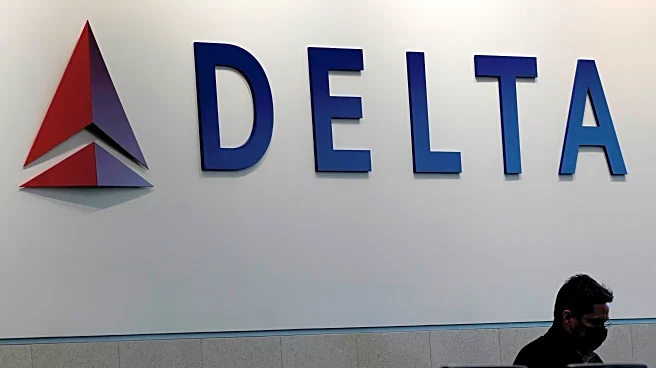What's Happening?
Two Delta Air Lines regional jets were involved in a low-speed collision on the taxiway at LaGuardia Airport in New York. The incident resulted in injuries to a flight attendant and caused significant damage to both aircraft. One plane, carrying 32 passengers, was preparing for takeoff to Roanoke, Virginia, when its wing collided with the fuselage of another plane arriving from Charlotte, North Carolina, with 61 passengers. The Federal Aviation Administration (FAA) reported that air traffic control had instructed the Virginia-bound plane to hold short and yield to the other aircraft before the collision occurred. The collision led to a flight attendant being hospitalized after injuring her knee. No passenger injuries were reported. The incident has raised concerns about aviation safety, especially in light of recent crashes and near misses.
Why It's Important?
This incident underscores ongoing concerns about aviation safety, particularly at busy airports like LaGuardia. The collision highlights the critical role of air traffic control and pilot situational awareness in preventing accidents on the ground. The FAA's investigation will likely focus on whether procedural lapses or equipment failures contributed to the collision. The event also raises questions about the effectiveness of advanced surface radar systems installed at major airports to prevent such incidents. For Delta Air Lines, this incident could impact customer trust and operational efficiency, as affected passengers were provided with meals, hotel accommodations, and rebooked flights. The broader aviation industry may face increased scrutiny and pressure to enhance safety protocols to prevent similar occurrences.
What's Next?
The FAA is conducting an investigation to determine the cause of the collision and assess any procedural or technical failures. Delta Air Lines has committed to cooperating with authorities to review the incident, emphasizing the safety of its customers and staff. The outcome of the investigation could lead to changes in ground operation protocols or enhancements in pilot training to improve situational awareness. Additionally, the incident may prompt a review of the effectiveness of existing radar systems at airports in preventing ground collisions. Stakeholders, including aviation safety experts and regulatory bodies, will be closely monitoring the investigation's findings to implement necessary safety improvements.













